
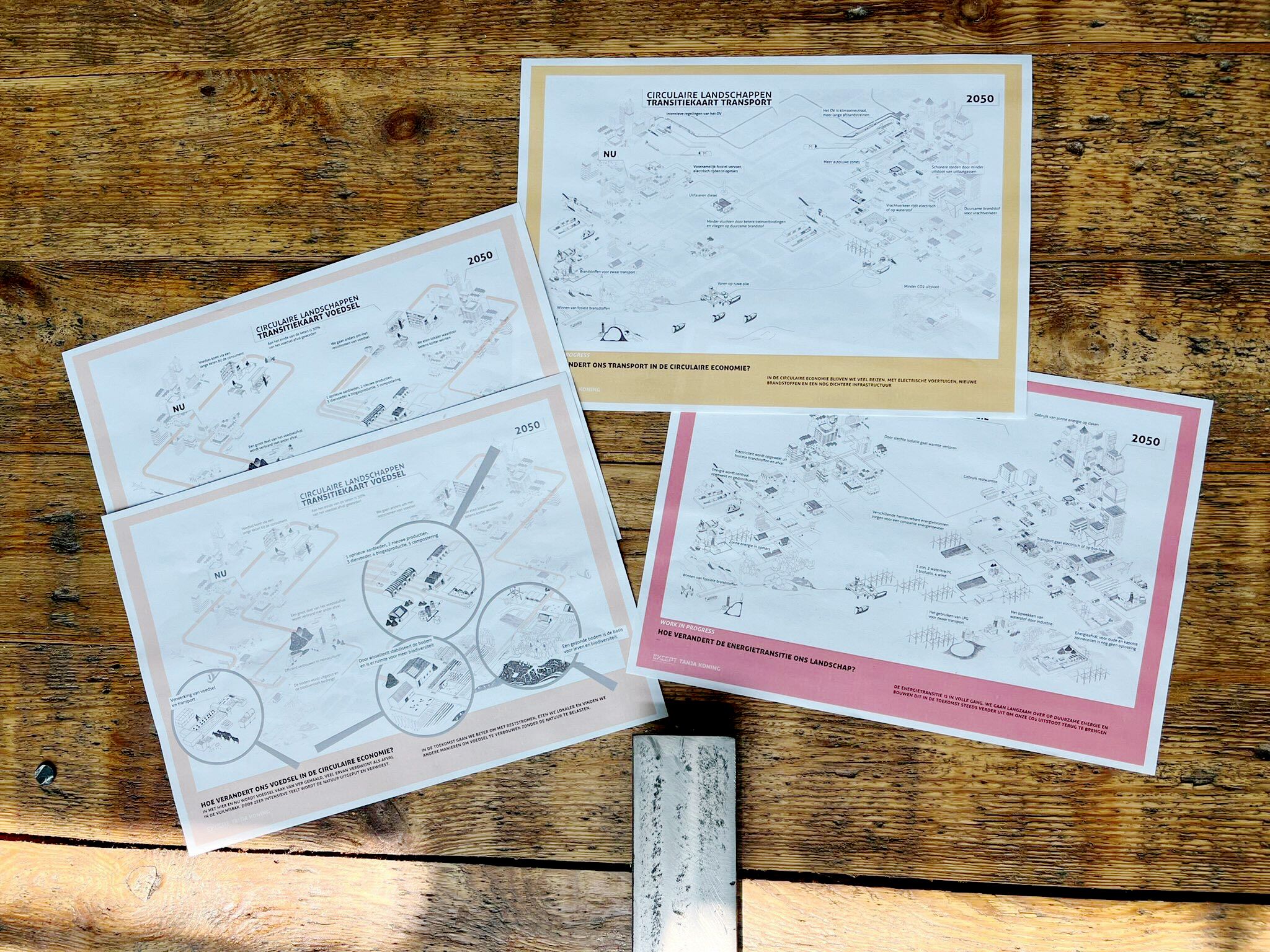

Landscape of the Circular Economy
Visualizing essential flows through society's landscape
Jul 26, 2023
The Landscape of the Circular Economy delves into the journey of material flows across landscapes, capturing the implications and opportunities in detailed illustrations. These drawings not only provide a comprehensive overview but also provoke essential questions about shaping our living environment both economically and ecologically.
The project investigates the intricate dynamics of material flows across landscapes. It visualizes the consequences and opportunities in large-scale drawings, providing a comprehensive overview and raising critical questions. How can we shape our living environment to be both economically viable and ecologically sustainable? What choices can governments and businesses make, and how can they gain insight into the cycles occurring in the landscape?
This project has been developed by Except Integrated Sustainability together with Tanja Koning and co-financed by the Stimuleringsfonds voor de Creatieve Industrie.
The Landscape of the Circular Economy project holds immense potential for the transition towards a more circular Netherlands. The maps created can be effectively used in workshops, stakeholder conversations, or as part of exhibitions. They serve as a powerful tool for visualizing and understanding the complex dynamics of circular economies.
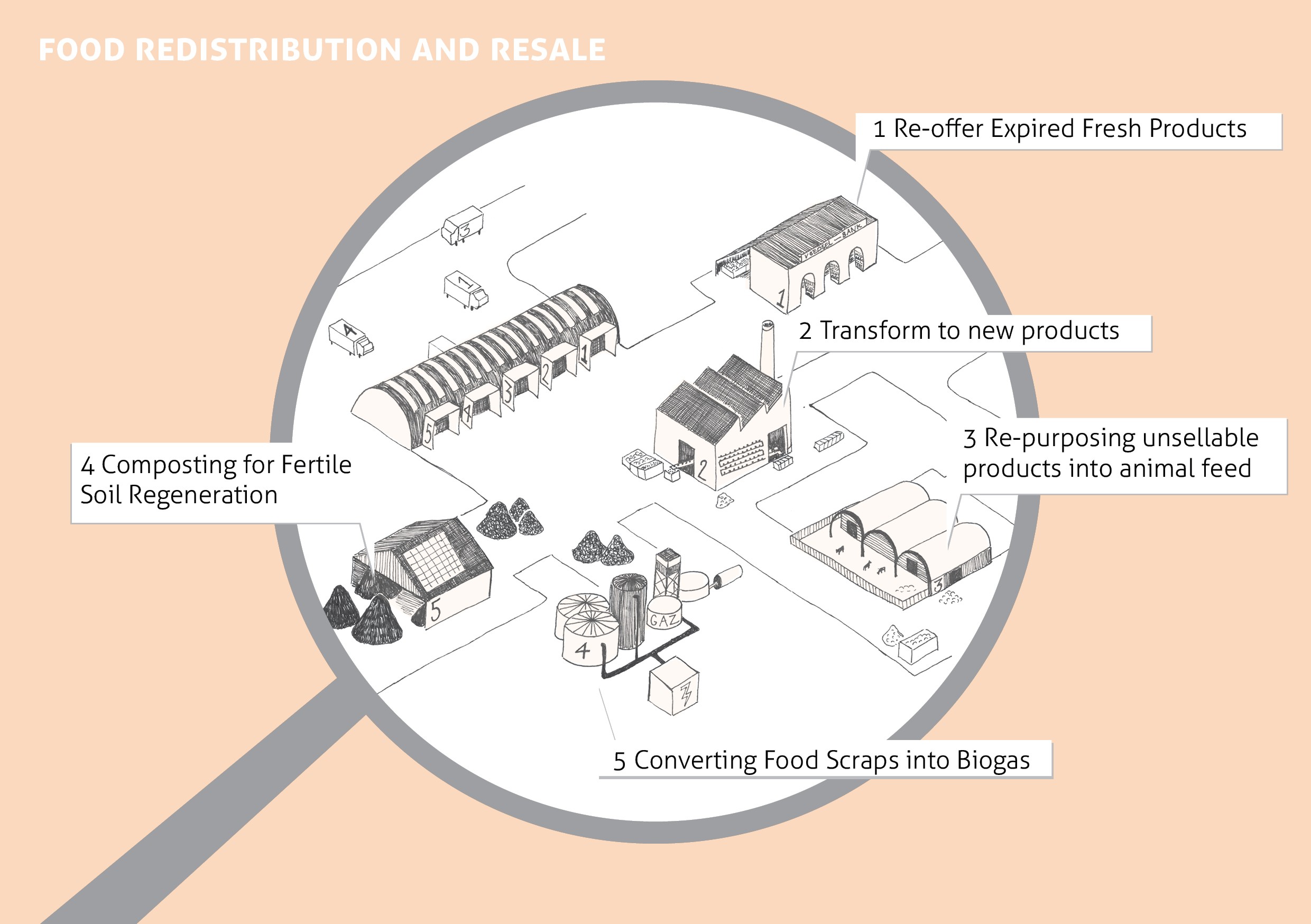
In 2050, food waste has been reduced significantly. This drawing shows how changes in the food chain can accommodate food having a valuable life after not being sold. Initially, the food is redistributed to another store, and the food is offered again (perhaps at a different price?).
Fresh products that passed their sell-by date are made into other products; think of soup, canned vegetables, pasta sauce, etc. This greatly reduces waste in the product cycle.
Fresh products that can no longer be sold or processed for human consumption are processed as animal feed. This reduces food waste and reduces the need to grow animal feed. Remaining food is composted, resulting in fertile soil that can be reused to grow crops. The last food residues can be converted into biogas and turned into energy.
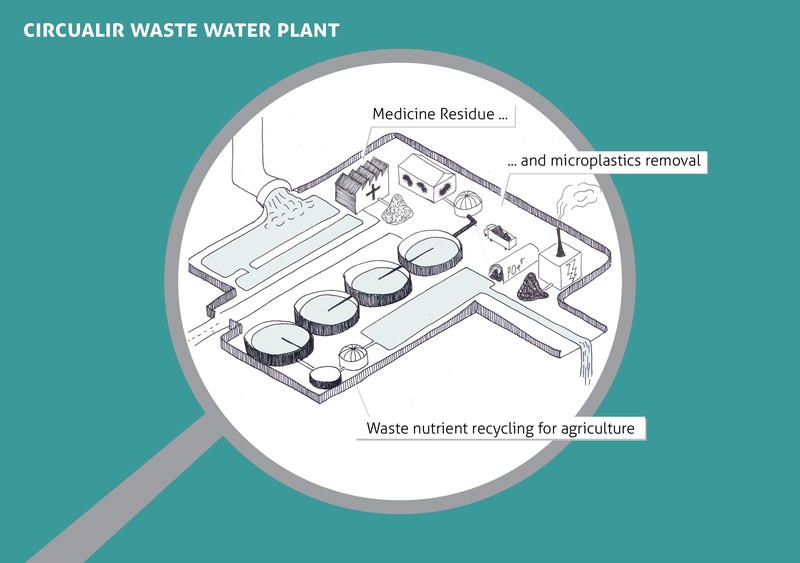
One of the significant questions surrounding water in 2050 is whether we will still have enough clean water available for our needs. This is a complex issue; on the one hand, the supply of clean water is decreasing due to long periods of drought and increased water usage. On the other hand, we see that we need to treat our wastewater more and more to remove increasing amount of pollutants.
In the water treatment of the future, we purify our wastewater even better; we can use the nutrients from our urine and feces (phosphates) for agriculture. But can we also remove microplastics from the water? And medicine residues? Can these be reused in some way?
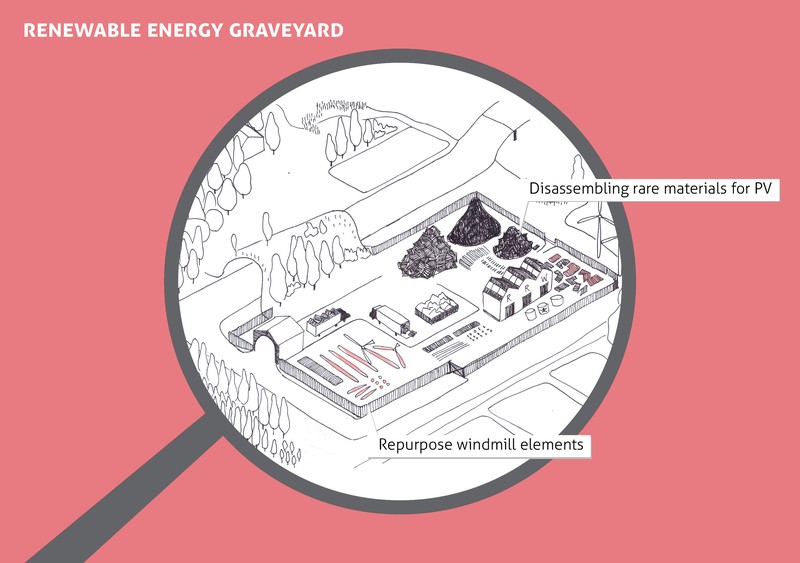
In 2050, only renewable energy is generated; our landscape shows large amounts of wind turbines and solar panels. But what do we do with the old ones? In 2023, we have not yet found a structural answer to that, neither for solar nor for old wind turbines.
We now think that large storage places will be created where panels wait for reuse; although many materials can be reused from solar panels, it takes a lot of time and energy to do so. How do you turn these kinds of products back into a viable business case?
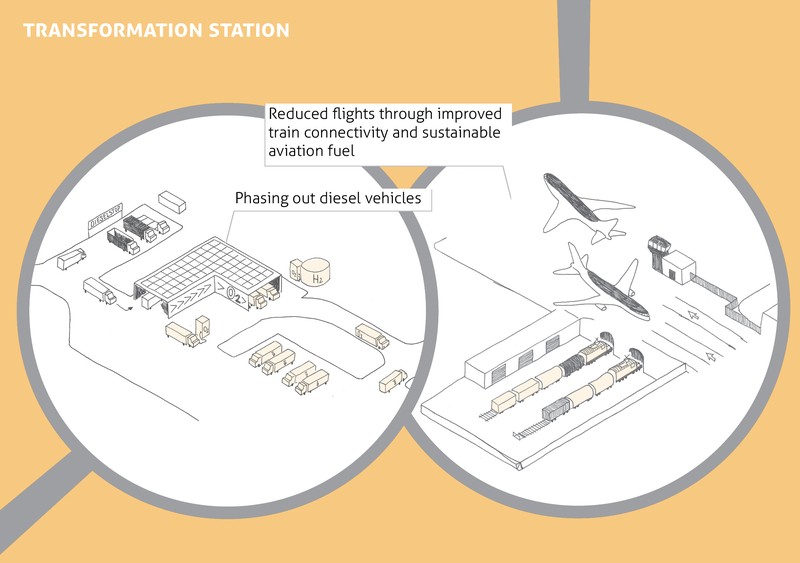
By 2030, cars and trucks will no longer be allowed to run on diesel. This means that everyone with a diesel vehicle will have to switch to another fuel. Electric driving or driving on hydrogen seem to be the best options. But what happens to the vehicles that are not converted? If these vehicles end up elsewhere in the world, aren't we still responsible for the vehicle's footprint?
In 2050, building materials are reused. Materials have a 'passport' making them searchable in a database for construction companies and architects. Used materials are used to construct new buildings. But what does this new construction market look like? Where do we leave the large stacks of beams, stones, and frames?
In many cases, building materials can be reused well. It is interesting to think about where we leave all the materials and how they can be found. What do we do with parts of buildings that no longer have a function, such as church towers, mills? And how can we deal with concrete foundations?

This project explores ways of using systems analysis and playful visualization to accelerate working on a sustainable future. Using these maps in engaging stakeholder environments helps for all parties to understand, contribute and help see and solve challenges faster. We look forward to help regional and national governments explore how they can use these insights to accelerate their policies and projects.
Related articles
July 26, 2023
Architect and Project Manager
Curator/ programmer & illustration